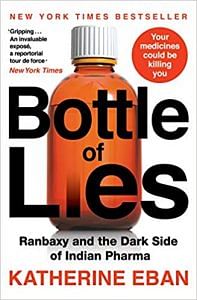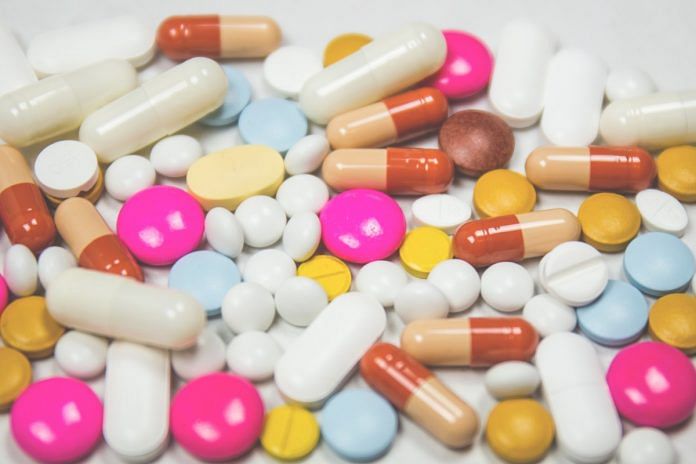At 8:30 a.m., the heat already stifling outside, Dinesh Thakur looked around the conference table at his six project managers and saw tired faces. Some had left their homes hours earlier to beat rush-hour traffic and arrive on time. They knew the meeting was important, but didn’t know its agenda. Thakur was about to give his team one of the stranger tasks in the annals of corporate due diligence, but had decided in advance to keep the true reasons for it to himself.
“We have a new assignment from Dr. Kumar,” he began. “He wants to know if we can substantiate all of the data that we have provided to various countries. This is a retrospective review of our portfolio, and he wants to know how confident we are about the information we have provided to various regulatory agencies in the last twenty years.”
The members of his team looked surprised, yet the assignment fell within their wheelhouse. Their job was to map all of Ranbaxy’s data, so it was only logical to find out if it was accurate first.
Thakur directed their attention to a large whiteboard where he’d drawn a graph. On the vertical axis were all the regions of the world where the company sold its drugs. On the horizontal axis were myriad questions. What products were on the market? When were they registered? Where were the actual dossiers used to register the products? Where was the supporting data? How many batches were sold in that market? What facility manufactured them?
Thakur assigned each of his staffers a region of the world. He directed them to compare the company’s raw manufacturing data for the drugs in those markets against the claims made in submissions to regulators. Did the data match up, or were there any discrepancies? Did the submissions comply with local regulations?
Also read: Superbugs on the rise, India must regulate antibiotics to avert disaster
A picture of the company’s entire operations had never been pieced together before. Until then, Ranbaxy had been partitioned. Specific groups worked on product development for different regions, but almost never met to compare notes. No one had a complete picture of how—or even where—the company’s drugs were approved. But Thakur had directed his team to make a multidimensional assessment that spread across the entire globe and stretched back years.
His own efforts began with a visit to the associate director of regulatory affairs, Arun Kumar, who had been directed by Raj Kumar (no relation) to cooperate.
Arun, who worked in the office right above Thakur’s, was waiting with a bemused air. “Everyone knows,” he said, by way of greeting.
“Knows what?” Thakur asked.
“What the reality is,” he said. Arun went on to describe how Ranbaxy took its greatest liberties in markets where regulation was weakest and the risk of discovery was lowest.
“Are you saying that the products on the market in those regions are not all supported by data?”
“Well, not all of them,” said Kumar in a casual tone, flipping through a report on his desk. “We know where the gaps are.”
Thakur was stunned by his nonchalance. “Did you bring it up to management?”
“What for?” Kumar replied. “They already know. In fact, they probably know it better than I do.”
Thakur thought he must have misunderstood. If the applications included known gaps, he asked, how could Arun sign off on them when he was the one certifying their accuracy?
That was part of the problem, Arun explained. Even though he had prepared the dossiers, the regional regulatory heads, like Abha Pant in the United States, could make any changes they liked to any of the applications. They took their orders directly from the top management and signed off on dossiers without Arun’s knowledge or consent.
This was incredible to Thakur. At a company like Bristol-Myers Squibb, the regulatory affairs directors had absolute control over what was submitted to the FDA, and for good reason. When regulatory executives signed submissions, they were asserting the data was accurate. It was a criminal offense to make a false statement on a government record.
“Surely you are not saying what I think you’re saying, right?” Thakur asked.
“There is too much to lose in advanced markets like the U.S. and Europe if you get caught, so it doesn’t make sense to take blatant risks for those portfolios,” Arun explained. “However, [Africa], Latin America, India, that is a whole different story.”
Thakur was dumbfounded. “Who all knows?”
“Everyone does,” Arun said, adding, “Everyone knows where the directives come from.”
“Is there no fear of the repercussions?”
“They are managed,” said Arun. “Everything is managed.”
Thakur was so stunned that he had to end the meeting and leave, just to compose himself.
As he walked through the door of his office, his executive assistant asked, “What is wrong with you? You look like you have seen a ghost.” Thakur collapsed in his chair.
He knew that compliance failures and ethical lapses existed within the brand-name drug industry. After he left Bristol-Myers Squibb, the company’s finance chief and the head of its worldwide medicines group would both be charged with criminal conspiracy and securities fraud for allegedly inflating sales and profits by concealing unsold inventory, charges that were later dropped.
Also read: Popular anti-BP drugs Valembic, Diovan under scanner in US for high levels of carcinogens
It was one thing to game the stock market or harm shareholders, allegations that would lead the men to reach a settlement with the U.S. Securities and Exchange Commission, without admitting guilt. But what Arun had just described was another matter altogether. You had to test the drugs to see if they were properly formulated, stable, and effective. The resulting data was the only thing that proved the medicine would cure instead of kill. Yet Ranbaxy was treating data as an entirely fungible marketing tool, apparently without consideration for the impact on patients. It was an outright fraud that could mean the difference between life and death.
Thakur could barely wrap his mind around it. But the assignment he’d been given drove him to return to Arun Kumar’s office later that day.
“There is no point digging up these things,” Arun told him. “You will find yourself out of the company if you go down that path. Tell Raj you have looked into it, and there is nothing more to see.”
“I can’t lie to my boss,” said Thakur.
“What is wrong with you guys who go to the U.S. for a few years and think you have become the moral police of the world?” asked Arun. “Do you think U.S. pharma companies never do such things?”
In his ten years with Big Pharma, Thakur had never seen or imagined such conduct. He was young and somewhat naive, but also stubborn and not inclined to back down. “Let’s get on with it. Where do we start?” he asked impatiently.
Grudgingly, Arun went to a whiteboard and drew a diagram, by region, of the liability that Ranbaxy faced: the United States and Canada on the bottom; Europe next; Latin America above that; India next; and ROW (rest of the world), comprising the poorest African nations, on top. “I’d start there,” Arun said, pointing to the top.
Thakur still felt that he was groping in the dark. He needed numbers. Arun called in his executive assistant to help. Thakur asked the young man what percentage of the dossiers submitted to regulators contained data that did not match what the company had on file. The assistant was evasive: “It . . . varies from region to region.”
“Give me an estimate in each region,” said Thakur. “How about in the U.S.?”
The assistant thought for a moment, then estimated, “Perhaps between 50 and 60 percent?” Thakur could barely breathe. Ranbaxy had faked over half its dossiers to the FDA? And that was one of the better regions?
“How about Europe?”
“About the same,” came the assistant’s reply.
“And India?”
After some hemming and hawing, the assistant answered, “100 percent.”
Testing the drugs for India was just a waste of time, he explained, because no regulators ever looked at the data. So the regional representatives just invented the dossiers on their own and sent them to the Drug Controller General of India (DCGI). What was needed for the DCGI was not real data but good connections, which they had, the assistant explained.
The scale of the deception stunned Thakur. He felt physically sick thinking about the patients. Thakur told the men he wanted a breakdown: each product by year, and the problem with each dossier.
 This excerpt from Bottle of Lies: Ranbaxy and the Dark Side of Indian Pharma by Katherine Eban has been published with permission from Juggernaut Books.
This excerpt from Bottle of Lies: Ranbaxy and the Dark Side of Indian Pharma by Katherine Eban has been published with permission from Juggernaut Books.






